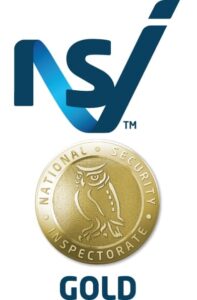Child car seat safety
Even if you buy the safest possible child car seat for your little one, if it’s not fitted correctly, it won’t offer the best protection for your child in a crash. Common fitting problems with baby and child car seats include:
- twisted seatbelts
- loose harnesses
- not all Isofix points being connected
- seatbelts sitting incorrectly on your child
1. Is the seatbelt or harness secure and untwisted?
If your child car seat is secured with a seatbelt, this must be tight so the seat doesn’t move. To test this, try pushing down on the seat where your baby’s head would be if the seat is rearward facing, and pulling on the harness if it’s forward facing – you shouldn’t be able to move the seat. The seatbelt mustn’t be twisted anywhere around the seat.
2. If the seat is rearward facing, is the handlebar in the correct position as shown in the instructions?
For some rearward-facing child car seats, the handlebar may need to be in a certain position, usually upright or fully back, as it can offer added 360-degree protection if your vehicle turns over in a crash. Look at your child car seat’s instruction manual to find out where yours should be.
3. Is the child car seat sitting squarely on the seat of the car and is the headrest in the correct position, as shown in the instructions?
The majority of the base of the child car seat should be flat on the seat, sitting squarely and evenly. It shouldn’t be riding up, which can sometimes happen if the seatbelt is too short. For most child car seats the headrest should be removed so it doesn’t touch the seat at all. However, some child car seats need the headrest to be attached – check the instructions to find out what is needed for your specific seat.
4. Is the seatbelt following the correct red or blue route guides?
Not having the seatbelt securely fitted into the blue or red route guides will weaken the seat’s protection. Check it’s right – red guides for forward-facing seats, blue guides for rearward-facing seats.
5. Is the metal end of the seatbelt in the right place?
The metal end of the seatbelt (the bit that goes into the buckle) must not be bending around the child car seat in order to fix it into the buckle. This could cause it to fail in a crash. Only the seatbelt should be in contact with the frame of the child car seat. In the picture above you can see the metal end of the seatbelt is starting to bend slightly round the child car seat. You don’t tend to experience this issue with newer cars, as the buckle is recessed into the adults seats so the metal end of the seatbelt doesn’t come into contact with the child car seat at all.
6. For Isofix seats, do the visual indicators show it is fitted correctly?
Visual indicators should show you that the seat is correctly clipped into the car – for example, sections may turn from red to green. Check the instructions to see what this should look like for your seat.
7. Is your Isofix drop-down foot securely on the floor and/or is the top tether firmly attached?
If you have an Isofix car seat, you will have either a drop-down foot, a top tether or both. With the foot, you must ensure it sits firmly on the floor, isn’t lifting the seat up and isn’t resting on underfloor storage, as this could make it less effective in a crash. The top tether must go over the back of the seat and clip into the dedicated mounting point – be careful not to attach it to luggage hooks. 8. Have you removed any thick clothes? Thick clothes such as bulky winter jackets will make the harness less effective, so take them off before putting your child in the seat.
8. Have you removed any thick clothes?
Thick clothes such as bulky winter jackets will make the harness less effective, so take them off before putting your child in the seat.
9. For younger children, are the shoulder pads level with your child’s shoulders, and is the harness not too tight or loose?
The shoulder pads of the harness should be as level with your child’s shoulders as possible – if they’re in a rearward-facing child car seat, the shoulder pads shouldn’t be dropping down no more than an inch, and if a forward-facing seat, raising no more than an inch. The harness shouldn’t be too tight or loose – make sure you can get two fingers between the child’s collar bone and the harness and that there is no slackness. 10. For older children, is the seatbelt across their shoulder and hips? If you have an older child strapped into a car seat with the seatbelt, this should sit on their shoulder. It shouldn’t cut into their neck or sit lower down on their arm. The lap part of the seatbelt should sit across their hips, not their tummy.
10. For older children, is the seatbelt across their shoulder and hips?
If you have an older child strapped into a car seat with the seatbelt, this should sit on their shoulder. It shouldn’t cut into their neck or sit lower down on their arm. The lap part of the seatbelt should sit across their hips, not their tummy.



